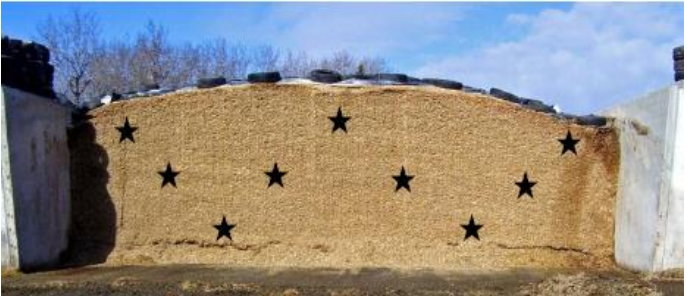How to estimate feedstock quality
Friday, 6 September 2019
As we say our farewell to summer 2019 now is also the time to assess forage quality to establish the requirements for purchased feed.
Following a technique that allows a representative sample of the feed to be collected, and does so in a safe manner, is key. Samples should only be collected after six to eight weeks, once fermentation has been completed. A list of companies offering forage analyses can be found here.
Sampling the whole clamp
- Using the sample probe, core down through the depth of silage, placing the sample from each core into a clean bucket as you progress through ‘W’ format (as below) avoiding the drier or wetter silage at the pit face
- Seal the holes with silage tape as you go along
- Once all cores are collected, mix the samples thoroughly with your hand so that the sample is evenly distributed
- Pour the sample out onto a clean surface and mix again
- Separate the sample into four and take small samples from each pile, placing them into a sealable bag.
- Seal the bag, recording which clamp it came from and the date it was collected. You should also include what type of silage it is, e.g. first cut grass, maize, etc.
- Post the sample immediately.

Keep an eye out for next week top tips for understanding your silage analysis results.

